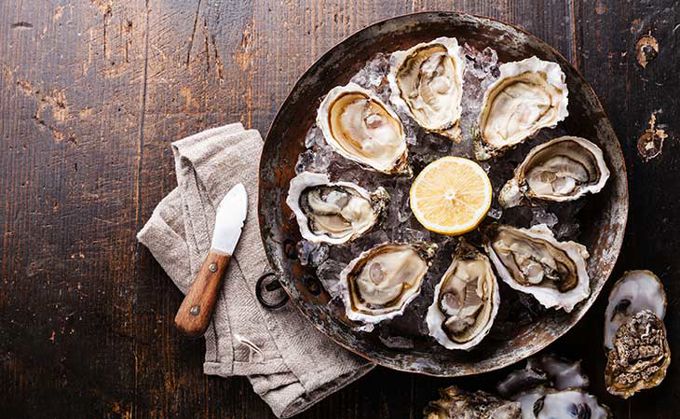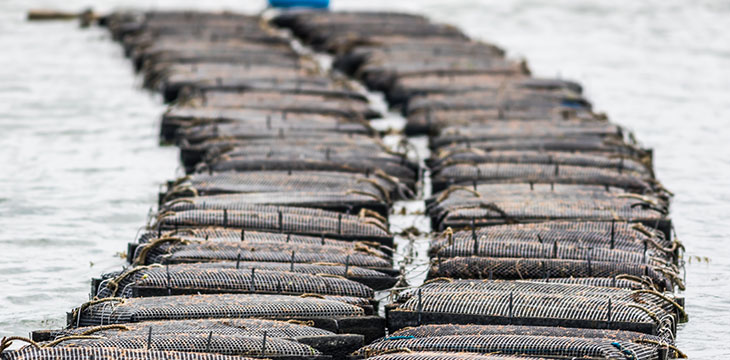
Reducing Conflict Between Oystermen & Virginia Waterfront Property Owners
Oyster Capital of the East Coast
Five years ago, Governor McAuliffe rightly proclaimed Virginia is the Oyster Capital of the East Coast. This made sense insofar as oyster production in Virginia grew from $1M in 2006 to $16M in 2017. However, one of Virginia’s competitors, North Carolina, which grew its oyster industry from $1M to $2.4M during this same time period, believes that the Commonwealth’s oyster leasing policies do not do enough to protect public resources, including the riparian property rights of waterfront property owners.
Bottomlands Under Lease
The Virginia Institute of Marine Science confirms that, as of September 2018, over 130,000 acres of bottomland are under lease to private individuals or firms. The criticism offered by North Carolina is that Virginia leases far too much of its bottomland and, once bottomland is placed under lease, Virginia fails to enforce production requirements on those bottomlands. Resulting in a large sprawl of unproductive oyster grounds instead of compact, high-producing, oyster grounds appropriately located amid large areas of unleased bottomland available for public use and enjoyment.
Conflict Between Oyster Farmers and Property Owners
Despite what one may say about a suggestion that one competitor offers to another, it is well documented in the media, in this blog, and elsewhere that for several years conflict in Virginia has been heating up between oyster farmers waterfront property owners. Oyster farmers want to expand bottom leasing in public waters, while waterfront property owners contend that large-scale industrial oyster farming interferes with their riparian property rights and that the state is privatizing too many public resources. These concerns are balanced in the first instance at the Virginia Marine Resources Commission (VMRC), with VMRC decisions being appealable into the Circuit Court.
Virginia Oystermen and Waterfront Property Owner Conflict Continues to Boil

Floating Oyster Aquaculture in the Amariscotta River in Maine
Rabbitti/Shutterstock.com
As reported elsewhere in this blog, the decision of the VMRC (on a 4-2 vote at its September 25, 2018 meeting) to allow installation of a 5.5 acre off the bottom aquaculture project in the confined waters of Milford Haven. With MIlford Haven being adjacent to waterfront residential property, property owners have appealed to the Circuit Court of Mathews County. A majority of the VMRC held that growing the oyster aquaculture industry trumped the riparian property rights of waterfront property owners. The case style is David L. Judson, et al. v. Kevin Wade, et al., Civil Case No. CL 18-0315. Norman Thomas, Esquire, is the attorney representing the waterfront property owners in that case. There are hearings scheduled for April 12, 2019 at 1:30pm and on May 24, 2019 at 1:30pm.
Political Effort that Could Turn Down the Heat
As previously reported elsewhere in this blog, Governor Northam established an Aquaculture Working Group that was charged to make recommendations on how to promote Virginia’s aquaculture industry while also addressing the concerns of boaters and waterfront property owners. The Aquaculture Working Group released its report in December 2018. Two pieces of legislation are now sailing through the Virginia General Assembly, boosted by the tailwinds created by the report. They are Senate Bill no. 1413 and House Bill no. HB 2047. The fate of both bills will be analyzed in a future posting on this blog. For present purposes, neither bill seriously addresses the lease productivity concerns voiced by North Carolina.
The North Carolina Solution

State Capitol Building in Raleigh, North Carolina
Sean Pavone/Shutterstock.com
Aquaculture experts in North Carolina, who have in the past looked to the Commonwealth as a model for shellfish production, now take issue with Virginia’s oyster leasing policies for the reasons noted at the outset of this blog post.
In 2018, the North Carolina General Assembly commissioned a comprehensive shellfish aquaculture plan. The resulting report, titled The North Carolina Strategic Plan for Shellfish Mariculture: A Vision to 2030, pointedly criticized Virginia’s bottom leasing policies, claiming that Virginia fails to adequately protect the public trust. The Report at page 22 states,
"Although Virginia’s shellfish farming industry is often referenced as a model for North Carolina, their lenient leasing policies that allow riparian owners to acquire leases on adjacent bottom without meeting utilization requirements has resulted in those 120,000 acres producing, on average, approximately one bushel of oysters and four bushels of clams per leased acre (Hudson 2017). Occurring on public trust bottom, unproductive leases represent an impediment to other public trust uses without delivering the economic and ecological benefits used to justify their conveyance for private uses. Furthermore, Virginia’s policies appear to have established a culture in which riparian owners obtain leases primarily to prohibit others from doing so, contributing to the current backlog of approximately 400 pending applications dating back to 2011, that the Virginia Marine Resources Commission is tasked with permitting."
Dr. Joel Fodrie, an associate professor at the University of North Carolina Institute of Marine Sciences and one of the authors of the NC Report, testified before the North Carolina General Assembly on the new strategic plan. In his testimony, he addressed the leasing issue, stating,
"[Virginia and Louisiana] are leaders in terms of how much shellfish product they’re putting out. We know that. We’ve been asked to in some ways model our growth after Virginia. However, one thing we found is that they produce this shellfish using a huge amount of leased habitat, and this infringes on public trust resources. They produce at an incredibly low rate of per unit-acre."
Fodrie noted that other states, such as Massachusetts and Washington, have been able to produce large amounts of shellfish using much less acreage than Virginia. He concluded, “This sort of low footprint on public trust bottom, but high productivity is the model that we think works best for North Carolina and our growers.” Fodrie testified that the move away from the Virginia model would allow North Carolina oyster producers to be more productive, while simultaneously reducing conflicts over leases in public trust waters.
In Conclusion: A Possible Win-Win
North Carolina’s strategic plan recommends maximizing production while minimizing the effect on public trust bottomlands by, among other things, raising production requirements on leases, increasing productivity enforcement, and setting restrictions on water-column leases. If the recommendations offered by North Carolina were incorporated into the two pieces of pending legislation mentioned previously in this post, or in future legislation, it is interesting to consider whether Virginia might maintain or improve current levels of oyster production while simultaneously decreasing acreage of bottomland under lease. If so, the benefit to all Virginians would be increased revenue from oyster production, shrinking usage conflicts of the type that bedevil oystermen and riparian property owners, and lessening usage conflicts between oystermen and the boating public. This may be the type of win-win-win that deserves a good hard look.
